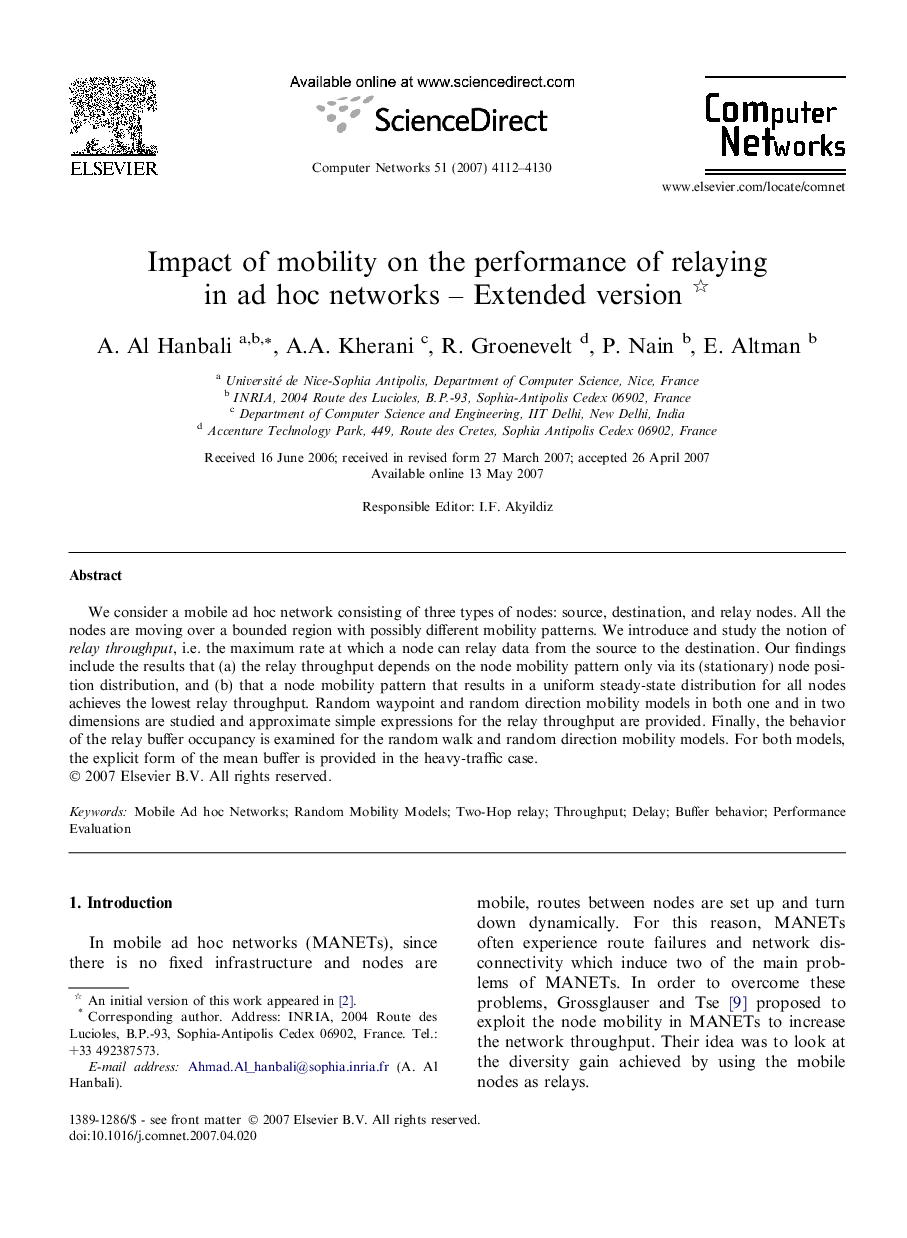| Article ID | Journal | Published Year | Pages | File Type |
|---|---|---|---|---|
| 453235 | Computer Networks | 2007 | 19 Pages |
We consider a mobile ad hoc network consisting of three types of nodes: source, destination, and relay nodes. All the nodes are moving over a bounded region with possibly different mobility patterns. We introduce and study the notion of relay throughput, i.e. the maximum rate at which a node can relay data from the source to the destination. Our findings include the results that (a) the relay throughput depends on the node mobility pattern only via its (stationary) node position distribution, and (b) that a node mobility pattern that results in a uniform steady-state distribution for all nodes achieves the lowest relay throughput. Random waypoint and random direction mobility models in both one and in two dimensions are studied and approximate simple expressions for the relay throughput are provided. Finally, the behavior of the relay buffer occupancy is examined for the random walk and random direction mobility models. For both models, the explicit form of the mean buffer is provided in the heavy-traffic case.
